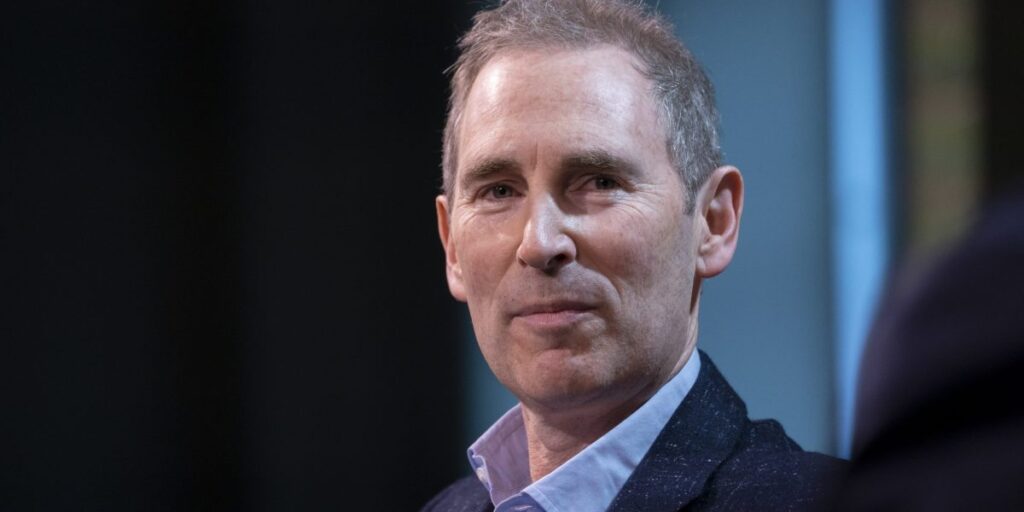Independent merchants, or sellers, account for more than 60% of goods that Amazon sells through its shopping sites, but Amazon has consistently raised the cut it takes from these sellers through various fees, which accounted for $140 billion of revenue in 2024. Asked by interviewer Andrew Ross Sorkin about the Federal Trade Commission’s antitrust lawsuit regarding Amazon, which argues in part that Amazon abuses its power over these merchants, Jassy defended the way the company treats these small and midsize businesses.
Read more: Entrepreneurs seeking millions from Amazon’s Alexa Fund face a stark reality
“It’s not hard to actually create software to put up an e-commerce website or storefront. It’s much harder to get distribution and access to customers, which is what Amazon gives sellers,” Jassy said, perhaps taking an indirect shot at Shopify, the e-commerce software company that is a frenemy of the tech giant.
“Sellers are making a lot more money selling on Amazon than they could on their own,” Jassy added. “If you look at things like Fulfillment by Amazon, which is our service that allows you to store your products with Amazon, we’ll pick, pack and ship it for you and it also is available for Prime shipping… It costs money, so we charge a fee for it, but it’s much more cost-effective for sellers. And while there’s always things we can be doing better for sellers and we work really hard at it, we have a great relationship with sellers.”
On LinkedIn and on X, the site formerly known as Twitter, longtime sellers seemed astounded by some of Jassy’s comments, including his characterization of the company’s relationship with the small businesses selling through its site.
“This statement was so wild I took a swig of a glass of water just so I could spit it out in surprise,” one longtime Amazon seller said on X. “Amazon’s relationship with sellers is the worst it’s ever been in my 13 years.”
Joe Kaziukėnas, the founder and CEO of the e-commerce research firm Marketplace Pulse, compared Jassy’s comments to a couples’ counselor that “effectively said that sellers’ concerns were invalid.”
“We don’t know yet if the FTC will be able to prove that Amazon is at fault but, if anything, Amazon’s communication and dialogue with sellers—that Andy says Amazon has a great relationship with—could be improved.”
On LinkedIn, Jon Derkits, a former Amazon corporate employee who now runs a consultancy for Amazon sellers, took issue with Jassy’s claim that sellers “are making a lot more money selling on Amazon than they could on their own.”
“I’m not sure how Jassy, or anyone at Amazon, would know how much sellers actually make,” Derkits said. “It seems to me that he’s conflating revenue and profit in that statement.”
An Amazon spokesperson did not immediately respond to a request for comment.
There are multiple fees at the center of this year’s Amazon seller uprising. One, an “inbound placement fee” charges many sellers extra if they are unwilling to ship their inventory to at least four different Amazon warehouses, unless they sign up for a new Amazon warehousing service. (Amazon has been reorganizing its U.S. warehouse network into eight regions in recent years, to try to get more merchandise closer to more customers to speed up delivery and lower its own costs.)
A new “low-inventory fee” will charge sellers if they do not keep enough inventory in Amazon’s warehouses, while Amazon also charges merchants if they keep too much inventory in a warehouse for too long. This fee was supposed to go into effect on April 1, but Amazon effectively pushed its implementation back to May by making April a “transition period” to “ensure sellers better understand how or if the fee will impact them.”
In June, Amazon will also begin charging sellers extra fees if customers return their items at an above-average rate.
While Amazon has also lowered some other fees simultaneously, many longtime sellers have told Fortune that the changes do not even out, and that they will be forced to either raise the prices of their goods or try to sell more through other online sites or their own e-commerce shop.
The new fees can be especially damaging to merchants who resell other companies’ brands as well as those selling in categories with low profit margins.
If sellers are looking for any relief in the future, the FTC may be their only bet. Fortune reported last month that the U.S. regulatory agency is probing the new fees and their impact on sellers. At the same time, Jassy’s writing in his annual shareholder letter published Thursday suggested that more financial pain is not out of the question for the Amazon seller community.
“In 2023, for the first time since 2018, we reduced our cost to serve on a per unit basis globally,” Jassy said in the letter. To be precise, he said, Amazon lowered its costs per unit sold by 45 cents year over year. And looking to the future, Jassy made clear that the company is “not done lowering our cost to serve,” underling the words for emphasis.
“We’ve challenged every closely held belief in our fulfillment network, and reevaluated every part of it, and found several areas where we believe we can lower costs even further while also delivering faster for customers,” the letter read. “Our inbound fulfillment architecture and resulting inventory placement are areas of focus in 2024, and we have optimism there’s more upside for us.”
For sellers, the question will be if the upside for Amazon will lead to downside for them.
Are you an Amazon employee or Amazon seller with thoughts on this topic or a tip to share? Contact Jason Del Rey at jason.delrey@fortune.com, jasondelrey@protonmail.com, or by text/secure messaging app Signal at 917-655-4267. You can also message him on LinkedIn or at @delrey on X.
In our new special issue, a Wall Street legend gets a radical makeover, a tale of crypto iniquity, misbehaving poultry royalty, and more.
Read the stories.

